Penn State, an American bastion of athletics, academia and collegiate economic power, once served as a protective cocoon for Jerry Sandusky, shielding him for years from any form of societal suspicion or challenges by higher authorities. Yet, as the once revered football coach's sordid trial now unfolds in Pennsylvania, the deeply disturbing and graphic portraits of alleged child sexual abuse are finally being given their human faces. Sandusky is facing 52 criminal counts related to the alleged assaults of 10 boys during a 15-year period. He continues to maintain his innocence.
As each alleged victim reveals his harrowing story, their emotional testimony gradually chips away at the once seemingly grand institutions that they were so recklessly swept under. While the details of their experiences are beyond shocking, it is the culture of silence surrounding Sandusky's alleged criminal behavior that ultimately raises some of the most perplexing moral questions. How could such rampant abuse continue for so long in such an esteemed community? Will anyone now be held accountable for the human wreckage that was left behind in its wake?
From the moment the prosecution commenced its powerful opening statement by showing the jury pictures of Sandusky's alleged victims, they began lifting the cloak of silence that has weighed upon these men since their youth. Deep fear, shame, the desperate need for a paternal figure and the aura of a better life were just some of the elements that made disadvantaged children from fractured home environments the easy targets. Yet, behind the curtain of masculine athleticism, these young boys were allegedly subjected to dozens of dehumanizing sexual encounters with an adult man, a football coach they idolized and trusted. For years, no one believed that Jerry Sandusky, perceived by many as a saintly figure, could be cable of committing such heinous crimes. Or, could it have been that for years, many chose to simply ignore the hushed rumors?
If the sexual abuse allegations against Jerry Sandusky are proven in court to be true, it will be found that he used his position of authority as well as his institutional connections to groom and then victimize children who were too disenfranchised to ever fight back. Employing the rah-rah camaraderie of Penn State college football and the surface altruism of his Second Mile charity as guises, the overwhelming evidence suggests that Sandusky was able to build trust through his community ties while hiding his ulterior motives. In the process, childhood innocence and human dignity were sacrificed while too many blind eyes were turned.
Protecting the reputations of adults, maintaining the status quo and preserving financial interests ultimately obscured the judgment of university and community leaders who had the responsibility to put a stop to the madness when they saw the signs. Instead, the clouds of dark secrets were permitted to brew until a violent storm eventually erupted, rocking Penn State when an alleged cover-up was finally revealed.
Former university officials Gary Schultz and Tim Curley are both already facing charges of perjury and failure to properly report suspected child abuse in connection with the Sandusky case. Additionally, on the morning of opening statements, NBC news issued a national report citing legal sources who said more charges are likely to be brought by prosecutors and could include former Penn State President Graham Spanier. At this point, Spanier has not been charged with any crime.
The report said investigators have "major new evidence" including emails exchanged in 2001 by Spanier and then university Vice President Gary Schultz discussing the allegation that Jerry Sandusky molested a boy in a university shower in 2001, but ultimately decided against alerting child welfare authorities. Investigators told NBC the emails show that Spanier and Schultz decided it would be "humane" to Sandusky to not involve legal authorities.
Mike McQueary, a former assistant coach at Penn State and one of the prosecution's star witnesses, recently testified in graphic detail to seeing the now infamous shower incident and reporting it to late Penn State coach Joe Paterno as well as discussing it with Shultz and Curley. Given this recent NBC report and McQueary's compelling testimony, it becomes even more apparent that the "humanity" of the alleged child victim was all but forgotten in a desperate attempt by university leaders to save face.
So far, the primary strategy of Jerry Sandusky's defense has been to continue undercutting the credibility of his alleged victims as well as those who witnessed the alleged incidents of sexual abuse. During opening statements and through cross-examination, Sandusky's attorney Joe Amendola has already argued that the accusers have a strong financial interest in this case which motivated them to possibly conspire and then concoct false claims.
There is tremendous irony embedded in Amendola's defense theory. It is much more likely that Penn State, certain university officials, the Second Mile charity and the university community at-large had greater long term, reputational and financial interests that would have been protected by maintaining silence than Sandusky's accusers would ever be able to gain by reliving their humiliating stories of abuse under oath. Although a false panacea and inexcusable, the perceived benefits of silence likely outweighed the risks of reporting for many involved.
While the Penn State scandal has drawn much needed attention to the issue of child sexual abuse, it is also forcing us to examine why certain institutional and social environments can provide a haven for sexual predators, protecting them and permitting them to repeat their crimes unfettered, victim after victim. Frequently, in communities where physical and economic power and reputational dominance are socially extolled values, the weakest members of our society can become invisible and most vulnerable to attack.
IN SESSION Anchor Christi Paul, IN SESSION Correspondent Beth Karas and Attorney Matt Semino discuss the Jerry Sandusky Trial on June 11, 2012